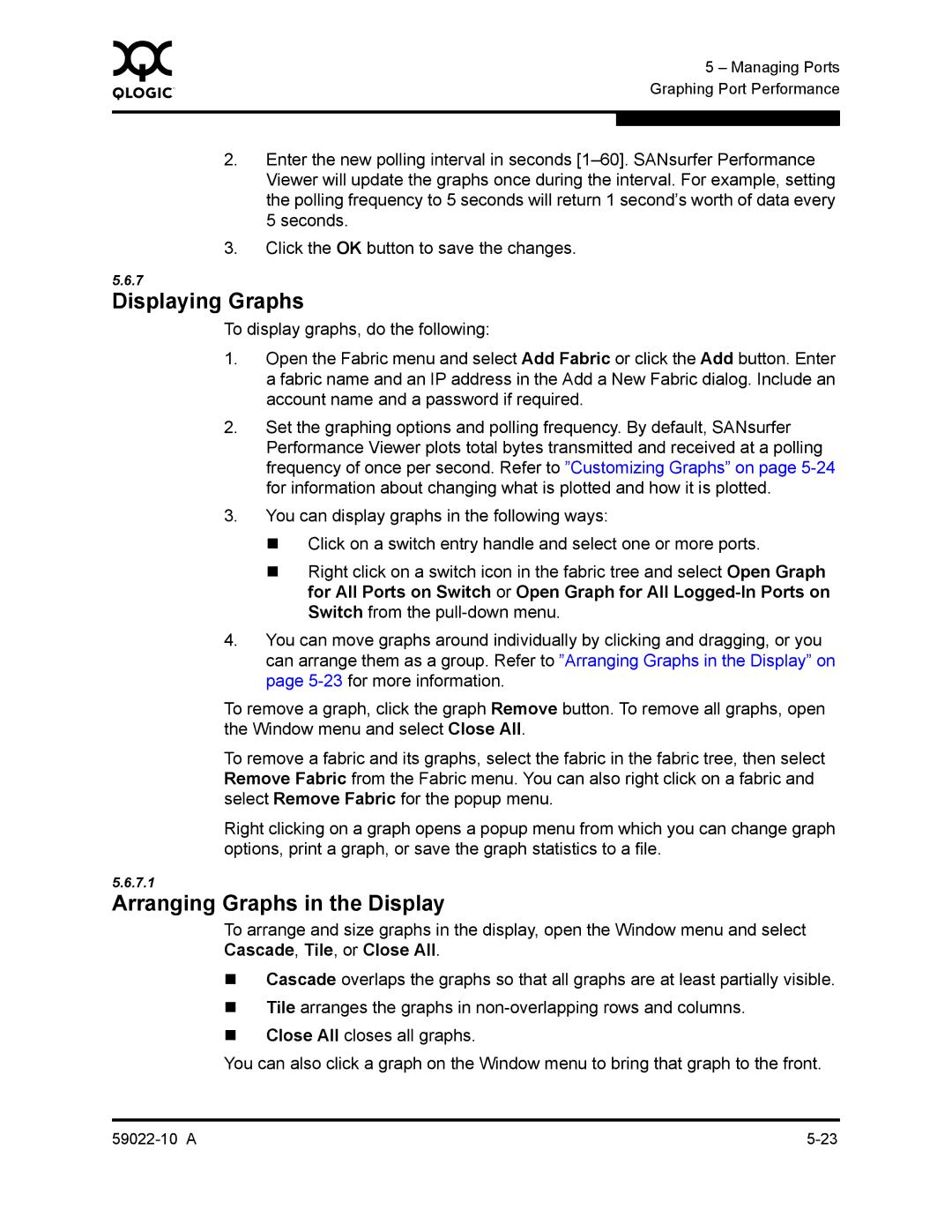0 | 5 – Managing Ports |
| |
| Graphing Port Performance |
|
|
|
|
2.Enter the new polling interval in seconds
3.Click the OK button to save the changes.
5.6.7
Displaying Graphs
To display graphs, do the following:
1.Open the Fabric menu and select Add Fabric or click the Add button. Enter a fabric name and an IP address in the Add a New Fabric dialog. Include an account name and a password if required.
2.Set the graphing options and polling frequency. By default, SANsurfer Performance Viewer plots total bytes transmitted and received at a polling frequency of once per second. Refer to ”Customizing Graphs” on page
3.You can display graphs in the following ways:
Click on a switch entry handle and select one or more ports.
Right click on a switch icon in the fabric tree and select Open Graph for All Ports on Switch or Open Graph for All
4.You can move graphs around individually by clicking and dragging, or you can arrange them as a group. Refer to ”Arranging Graphs in the Display” on page
To remove a graph, click the graph Remove button. To remove all graphs, open the Window menu and select Close All.
To remove a fabric and its graphs, select the fabric in the fabric tree, then select Remove Fabric from the Fabric menu. You can also right click on a fabric and select Remove Fabric for the popup menu.
Right clicking on a graph opens a popup menu from which you can change graph options, print a graph, or save the graph statistics to a file.
5.6.7.1
Arranging Graphs in the Display
To arrange and size graphs in the display, open the Window menu and select Cascade, Tile, or Close All.
Cascade overlaps the graphs so that all graphs are at least partially visible.
Tile arranges the graphs in
Close All closes all graphs.
You can also click a graph on the Window menu to bring that graph to the front.
